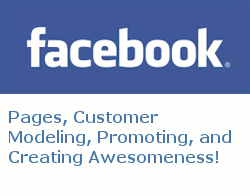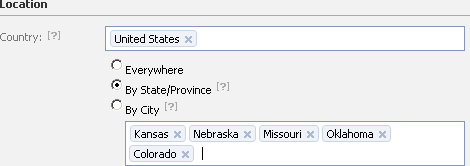
Are Twitter’s networking and conversation possibilities still compelling, or is Twitter mostly for link sharing and SEO now? The experience of Twitter is different for each individual, but maybe there is also a collective answer.
If you have used Twitter as long as I have, you have surely seen a lot of change. I opened my first Twitter account in April 2008, just over two and a half years ago. I used Twitter to announce my racing starts and results, and to let people know when my auto racing webcast was live. I was too busy on race tracks to use it for much else.
In the beginning, I was pretty unaware of the great value of Twitter, as most of us were, but then I decided to take a little closer look when I created my @murnahan account. Twitter’s usefulness really struck me after I learned about a fire that happened on the roof of my kids’ school, about 100 yards from my home, in a Twitter update. No, I didn’t learn about that fire by hearing the fire trucks or standing in my driveway and seeing flashing lights. I discovered it on Twitter. This was when I decided that Twitter was really worth a closer look.
Witnessing the Twitter Boom
There was a time, about a year and a half ago, when you were “nobody” if you didn’t use Twitter. It was a sudden craze that dragged celebrities in by the hundreds, and all that publicity coaxed people to check it out. Many of the huge boom of Twitter users were pretty skeptical of Twitter, but they just had to know what it was all about. It was a really amazing tool back then, for those who learned how to use it to meet people and build a network.
The Twitter boom was in full swing, but the majority of new users did not return more than a few times, and Twitter experienced massive losses of users. The number of new users was still skyrocketing, but the number of people actually using the service looked bleak. The loss rate was high.
Twitter is still pretty close to the same service, overall, and the tools surrounding Twitter were made better since that time. What has changed is in how it has been used, which is unique for each of us, but has a collective affect on Twitter as well. Like any tool, it can be used in productive ways, or in unproductive ways. A hammer can build a home, or it can destroy one. Unfortunately, many users have been influenced by the “dark side” and have been less than productive for themselves and the community as a whole.
There are many people who will choose to use Twitter to “build a house” rather than destroy one, but there are enough hammers swinging that it can be pretty challenging to recognize the difference. The confusion and frustration showed many Twitter users the door, and they left.
Are the Good Days of Twitter Gone?
Twitter became the easiest network of all for gaining a following of people. I called it the Twitter Follower Frenzy in an article from June 2009, and it just kept growing from there. I found that for a lot of users, it felt like an obligation to refollow anybody who loved them enough to follow their Twitter feed. Heck, I never sought followers, but somehow I ended up following over 20,000 people, mostly just because they had followed me and I wanted to seem politely accessible.
The Follower Frenzy led to a huge pitfall. Call me an ass for pointing this out, but it is really true, and I can tell you why. Twitter gained a lot of it’s popularity among marketers because it was fun, interactive, informative, and because it was a really easy way to bring thousands of people to a website. Once people seemed to “figure out” that anybody and everybody can be a “marketing expert”, Twitter was the low hanging fruit. Twitter would become the place where anybody could be a success by pushing out advertisements, or so they hoped.
How extreme was the lure of Twitter? Back in early 2009, when I would send a Twitter update I could watch anywhere from 500-2,000 visits to my blog from a single “tweet”. Less than 300 unique visitors attributable to a given tweet meant that Twitter was down.
It was apparent that anything worth a tweet was going to be quite visible. Twitter was really useful for bringing attention to websites, thus it became highly abused. It can still be useful for sharing information, but nothing like early 2009. It was really very astonishing.
I had a lot of fun with Twitter back then. Here is a video I produced reflecting the fun I had: Twitter Kids
Is Twitter Really Damaged, or is it Just Me?
It was easy for me, at first, to question whether I had just become less useful or interesting. I ruled this out, because all of my other networks and my blog were still doing fine. Perhaps I have become less interactive with Twitter, but that was actually more of a reaction than the cause. I slowed my use of Twitter as a conversation and networking tool when it started looking more like just another link sharing network.
I questioned whether it was just me who noticed a lot less interaction on Twitter, but I can definitively answer that this was not the case. There was a collective damage by many users, and there was actually a defining moment when Twitter started going down hill for me, and for a lot of others. Ironically, it was right about the time I launched the book “Twitter for Business: Twitter for Friends” which so many of my Twitter friends urged me to write.
I still find usefulness to Twitter for it’s search functions and for communicating with a few friends. I like Twitter, I really do, but where I have noted troubles with Twitter is in the number of people who took their follower count too seriously and it became a shouting contest where millions of people tried to get their 15 minutes of fame or to sell their goods and services. It started to look like a huge business opportunity to millions of people.
Collective Benefit of Reviving Twitter
The question of whether Twitter is worth “reviving” is a matter that is up to each of us to answer. We each use Twitter in our own ways, and we each see different results. A revival of Twitter is something that we each do on an individual basis, and it largely affects only our own experience with the service.
At the same time, I still hold some belief that if enough people took the initiative, there would also be a collective benefit. It took a collective effort to cause the damage and subsequent loss of interest in many people. Similarly, doesn’t it seem possible that there could be a collective repair and restoration of people’s interest if we reversed some of the damage?
I think there can still be a lot of great conversations and relationships built, but it will take effort. It will likely require close attention to follower/following connections, and making lists to manage all the information.
The days of massive website traffic and huge allure to inexperienced and shotgun-blast marketers has dwindled. The allure to spammers is still there, but it seems less pervasive because they realized it is no longer the goldmine they hoped for. The useless garbage is easier than ever to filter out if you make the effort.
Perhaps now if people will concern themselves less with unrealistic popularity and inflated numbers, and more with purposeful popularity within a core group of interesting people, Twitter can still be a great networking tool. That is, if we can bring back some of the interest of those great people who just became bored, irritated, and deaf from the static.
Well, what are your thoughts? Don’t be shy!
P.S.
I hand-picked a small group of articles I have written about Twitter over time. I hope you will enjoy these:
- How To Become Popular on Twitter Without Actually Being Useful (humor)
- Did Twitter Go Deaf With Broadcast Static? (I saw this a long time ago)
- Twitter is Useful but Blogging is Better (interesting statistics)
- Twitter: The Tweet About Retweet (the old days of Twitter)
- Follow, Unfollow, Re-Follow … What?! (sensible thoughts on follower numbers)
- Twitter Like The Twitterati … But Get Me a Bucket! (humorous yet tragic)
- Dear Tweeps: I love you so much … (humor)
Photo credit to SlapAyoda via Flickr
Podcast: Play in new window | Download







